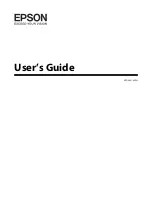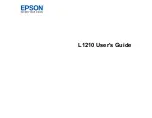
USER’S GUIDE
A-12
where name is the name of the service. Do a
SHOW SERVICE
command to
see the enabled protocols. Note that a given service must have at least one
protocol enabled.
A filter is a program built into the NC-series that performs a specific
function. There are currently two filters available:
filter no. Description
1
This filter adds a carriage return character
every time a linefeed character is
encountered in the data stream. It is useful
for printing UNIX text files, because such
files do not have carriage returns at the end
at the end of lines.
filter no. Description
2
This filter provides the ability to use
the AppleTalk binary mode (this filter is
automatically enabled when AppleTalk is
enabled on the service.
filter no. Description
3
This filter converts a text file to PostScript
for use with PostScript-only printers.
The service TEXT is predefined with the text filter, while the service
BRO_xxxxxx_P1_AT has the AppleTalk filter enabled. To use a filter with
other services, use the following command:
SET SERVICE
name FILTER fltrno ENABLED
where name is the name of the service and fltrno is the number of the filter
(e.g., 1 for the text filter).
The default service names are rather long and difficult to remember. If you
want to change a service name to something more meaningful, execute the
following command from the print server remote console:
SET SERVICE
oldname NAME newname ENABLED
To use a service in LAT, specify the /SERVICE option instead of the
/PORT option when defining the LATCP port. For example:
L
ATCP> CREATE PORT LTA555
LATCP> SET PORT LTA555/NODE=BRO_0009C3-
/SERVICE=BINARY_P1
To use services from TCP/IP, specify the service name as the remote
printer or "rp" parameter in the printcap file or the printer setup program
(e.g., SAM or SMIT). Remember that if you want to print text files to a
UNIX service, you should enable the TEXT filter (filter number 1).
To use a service with NetWare, use PCONSOLE to specify the default
NetWare service name as one of the print servers for the queue (this service
is BRO_xxxxxx_P1 by default, where "xxxxxx" is the last six digits of the
Ethernet address). If you want to use a different service, you must also
specify this service as one of the print servers for the print queue.












































